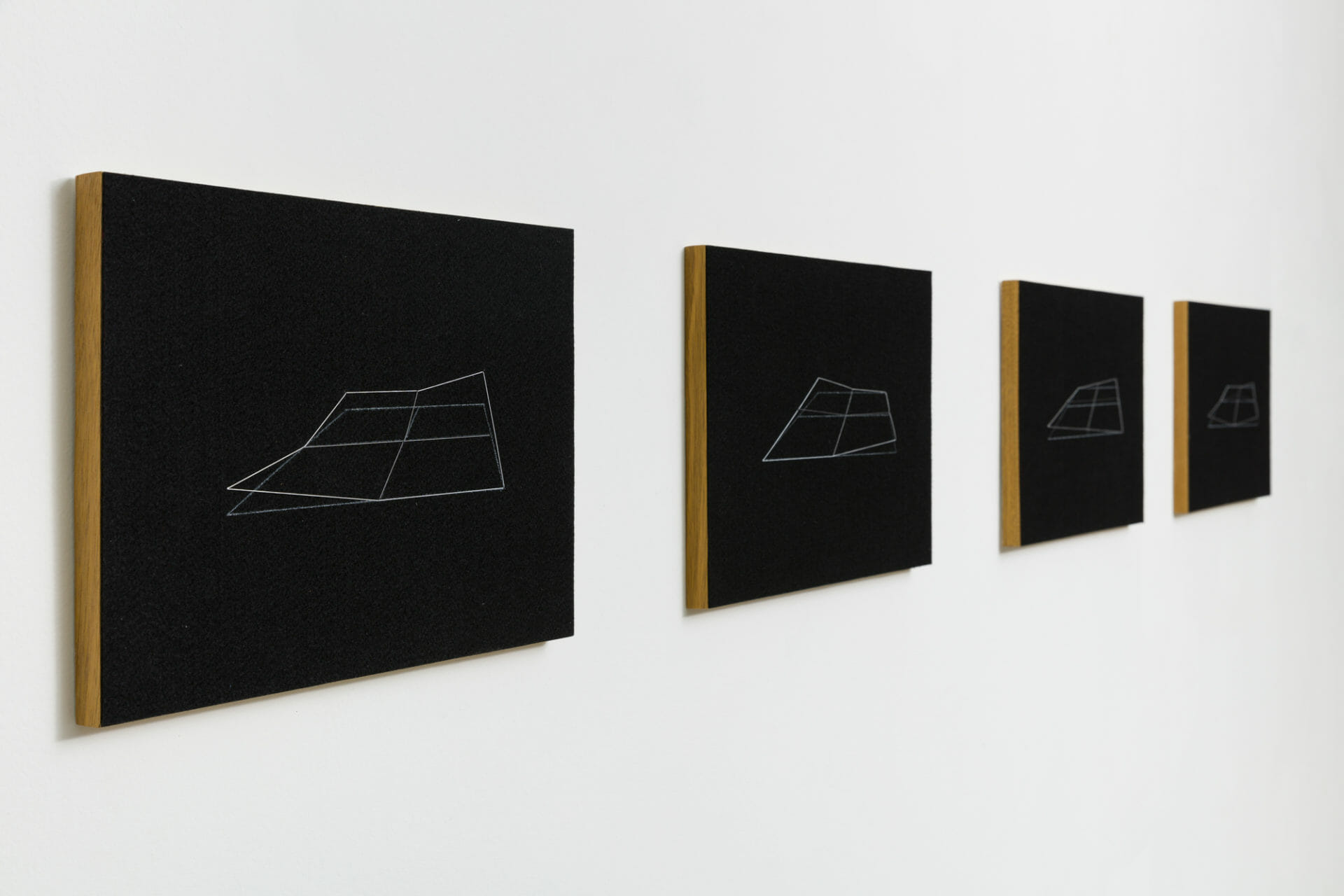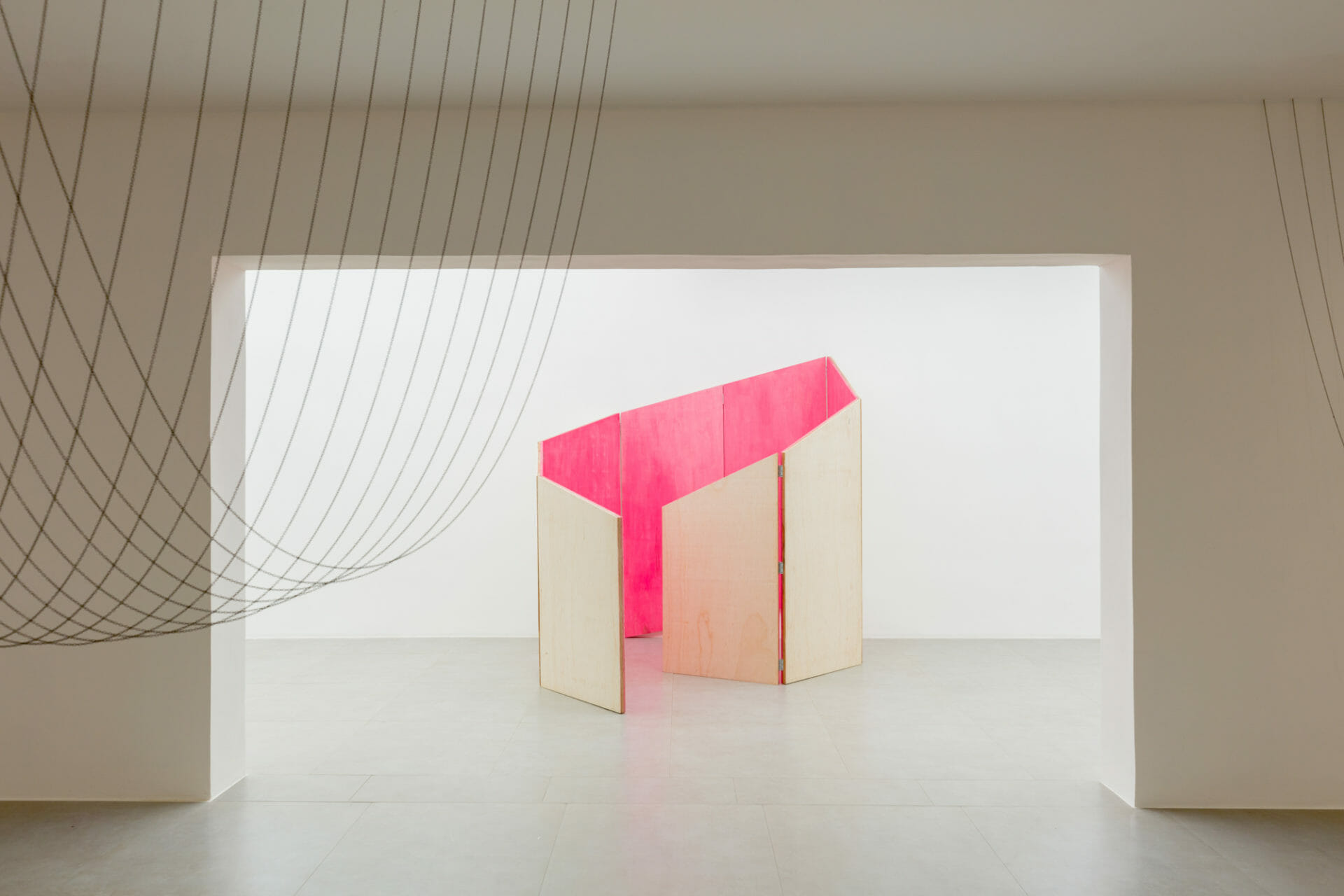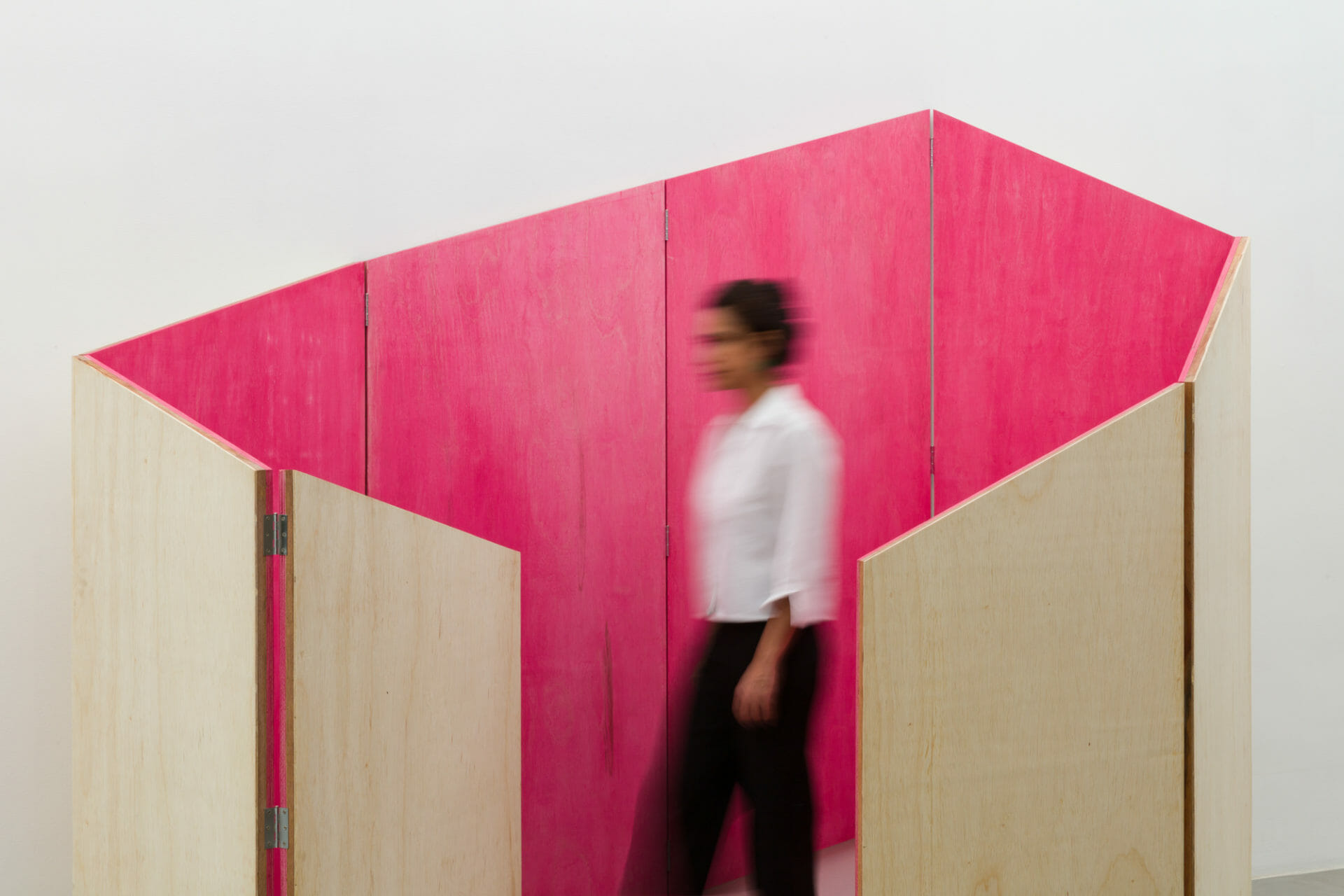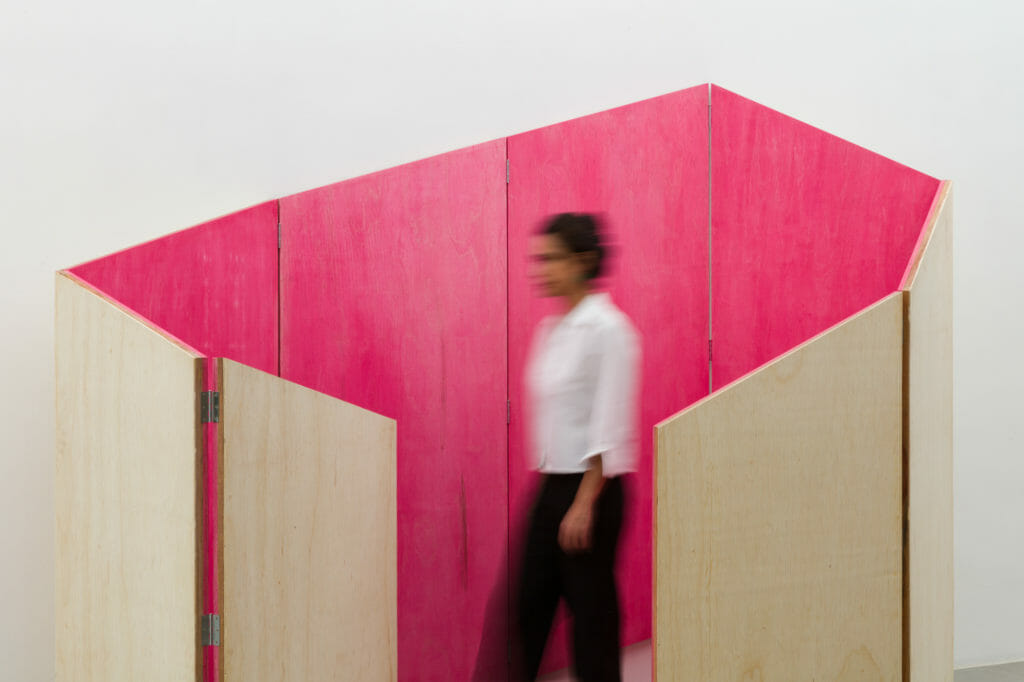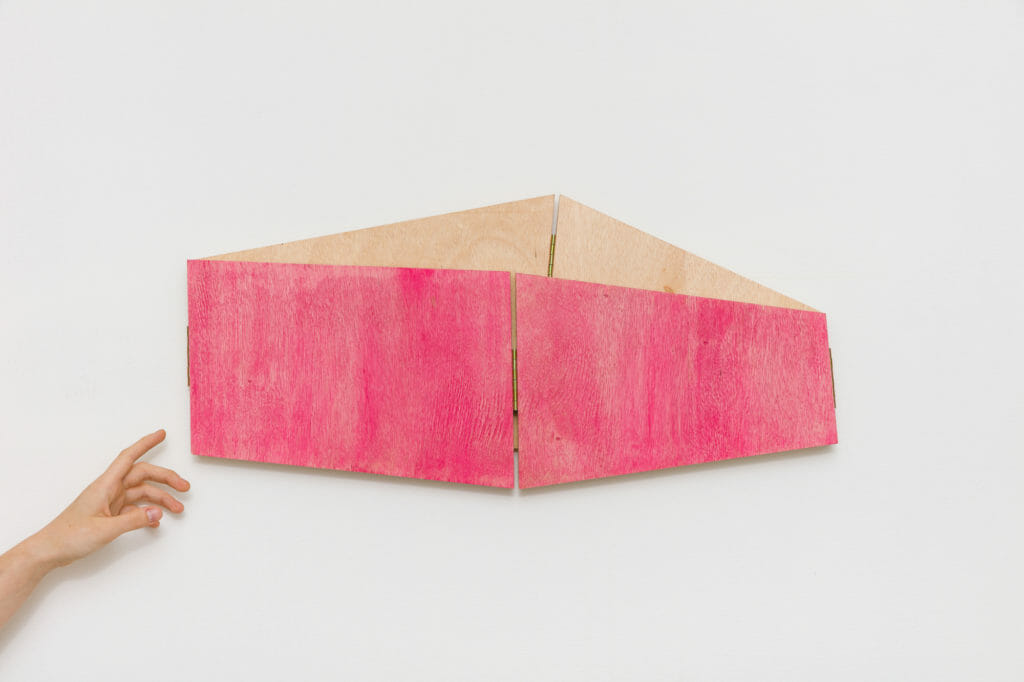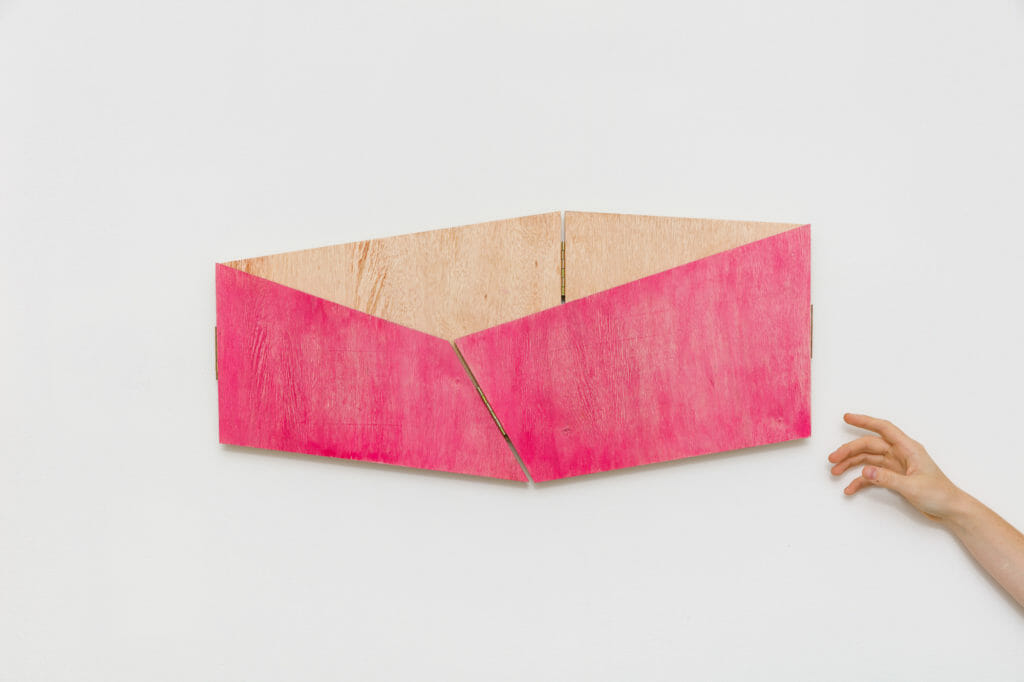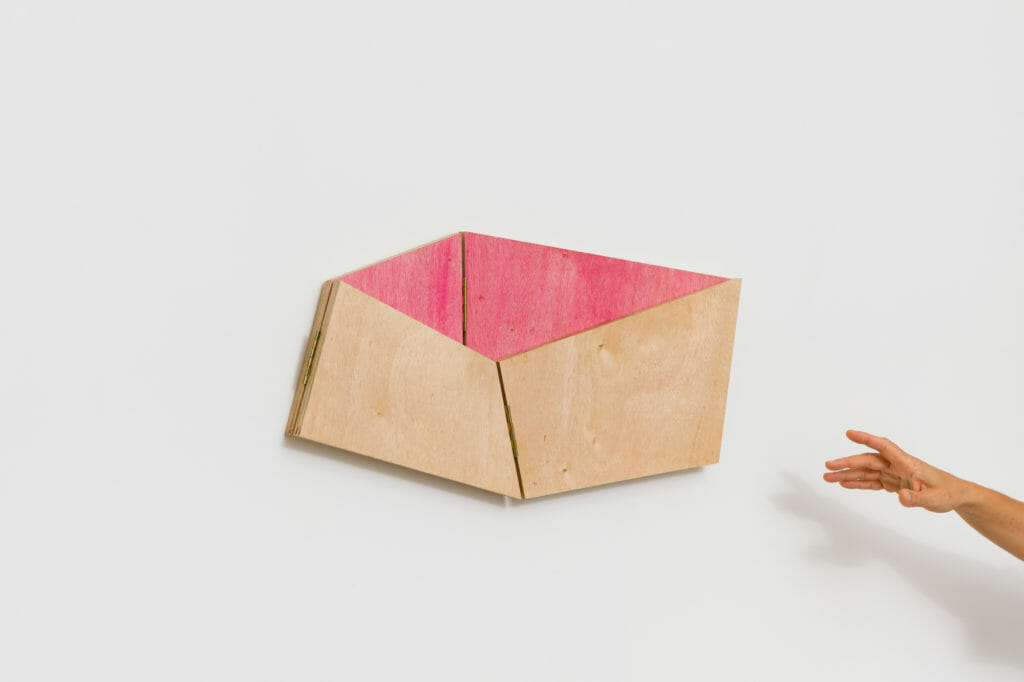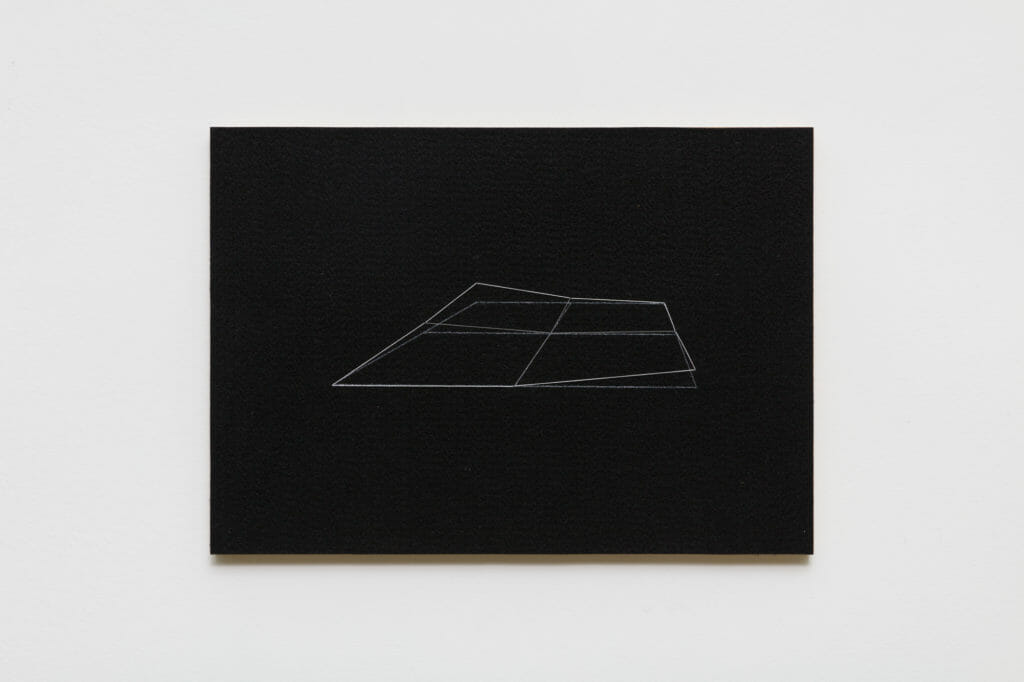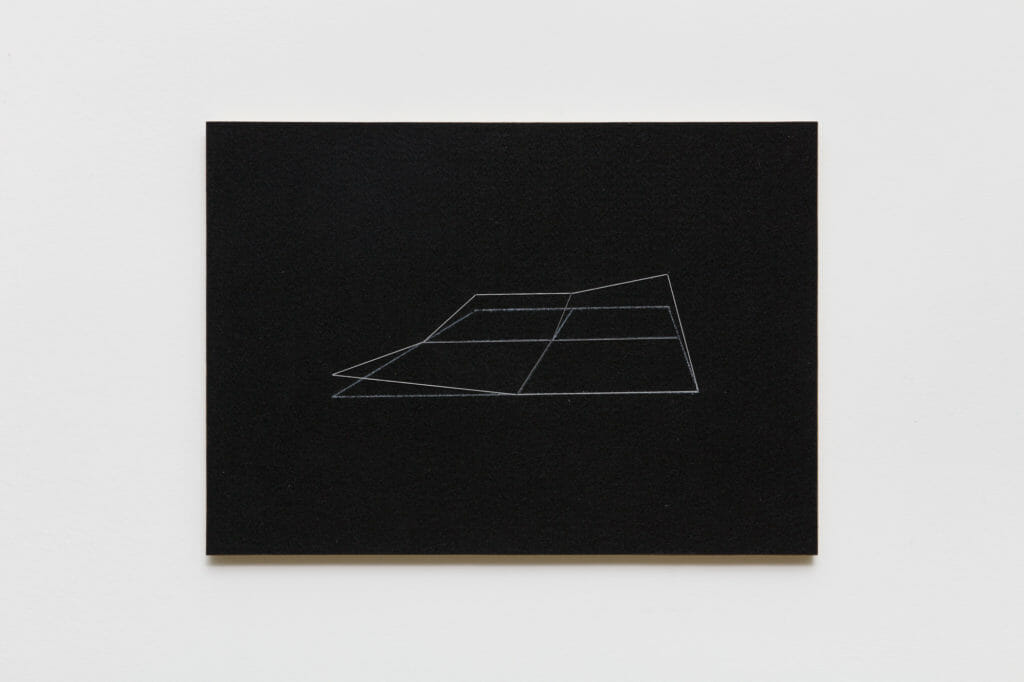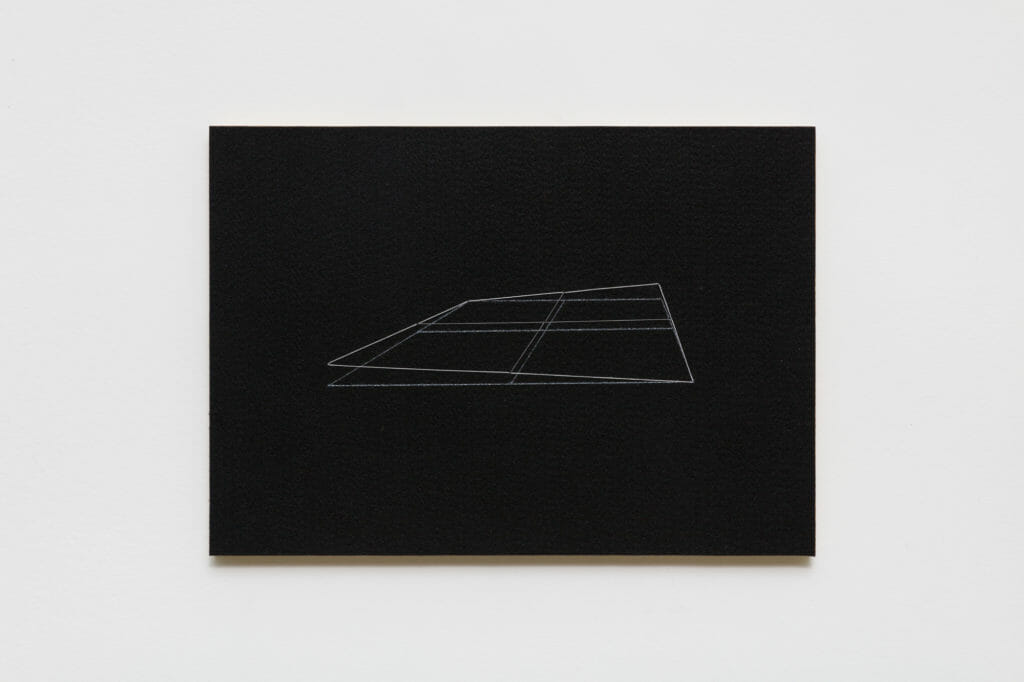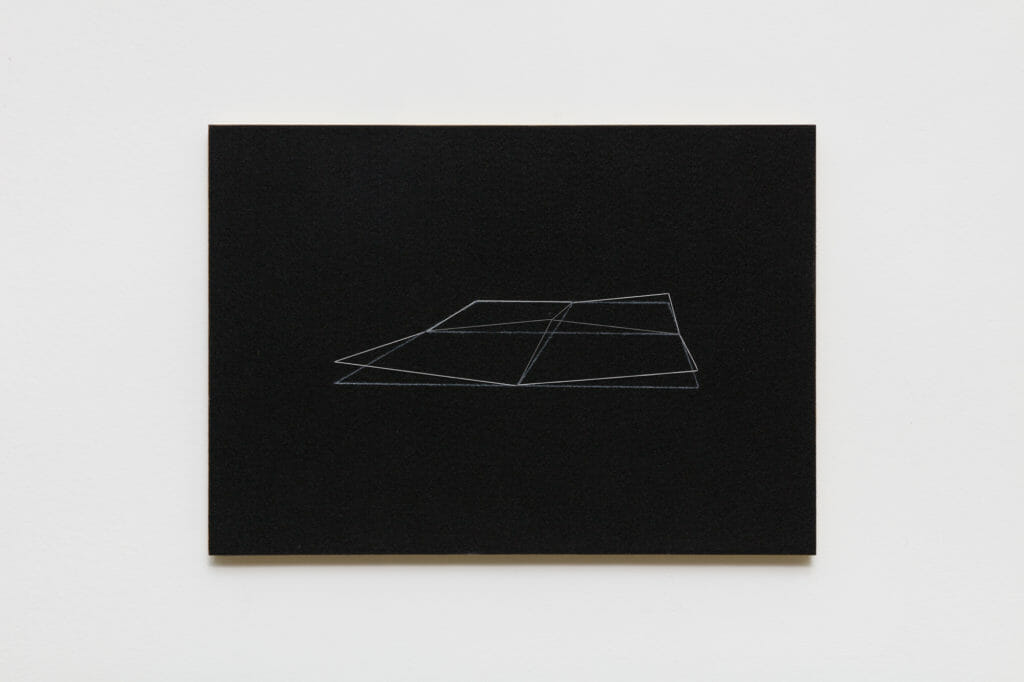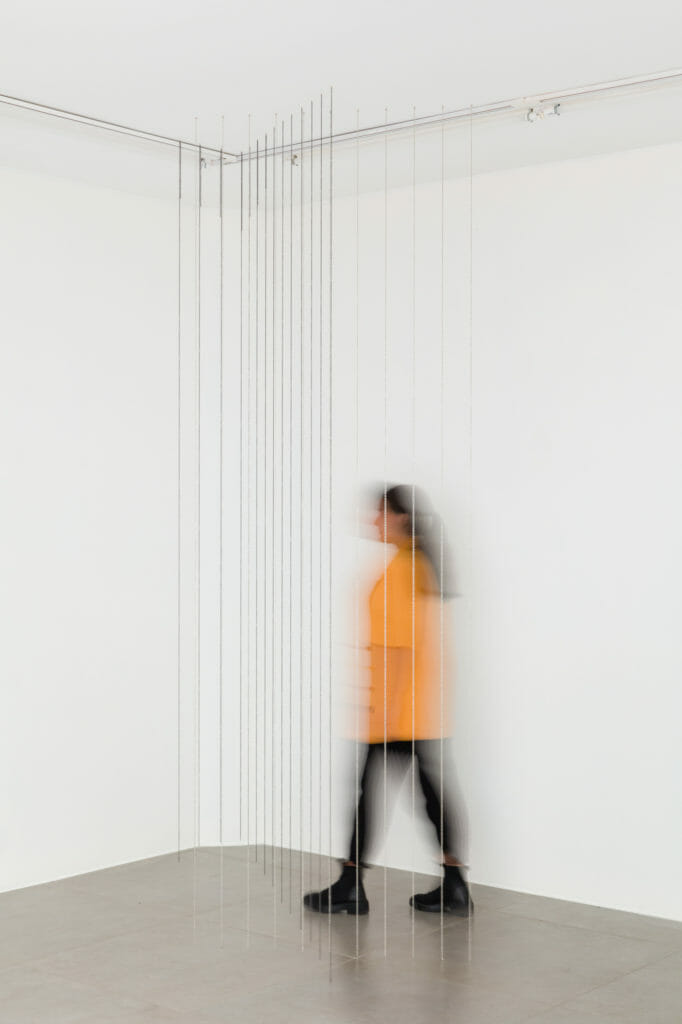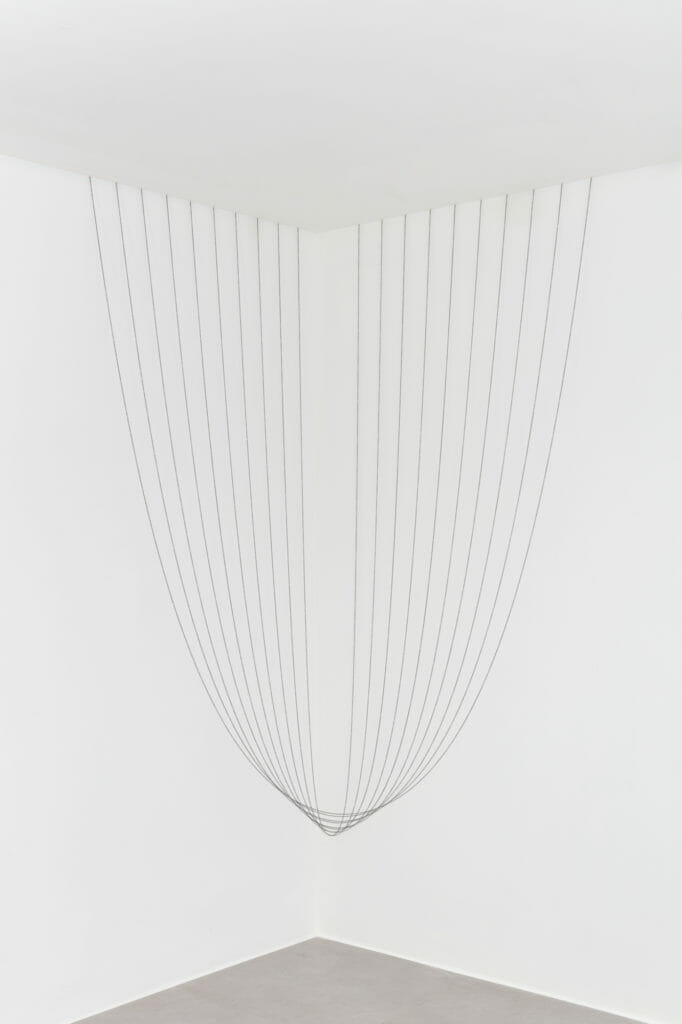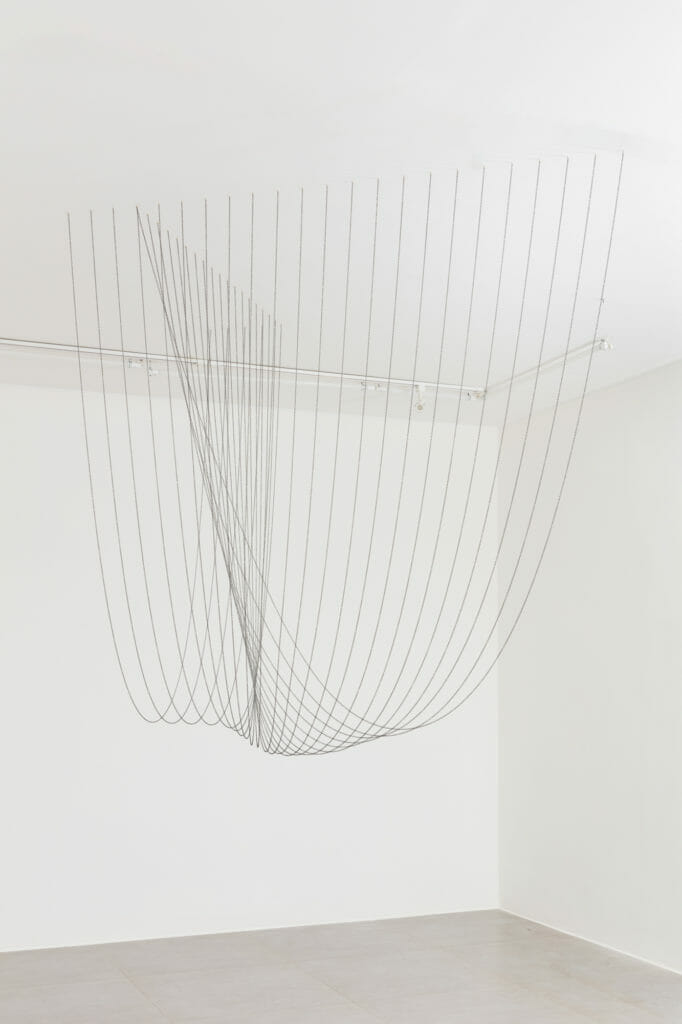Our view of the world arises from constant and varied interactions. We are the sum of countless visual, auditory, olfactory, and tactile sensations. One cannot escape from the fact that people raised in different environments also inhabit different sensory worlds. Everything we are and we do is linked to the experience of space.
If every human experience is spatio-temporal, in “Canteiro” (Construction Site) Amália plays, deconstructs, and resignifies space with the certainty that the infallibility of memory and time depends on it. It is in this game that enchantment arises: devoid of patterns acquired and the obligation of a functional eye, the viewer immediately awakens to aspects usually imperceptible.
What is the function of a hinge if not to bend (“Dobra Dura” [Hard Fold])? Certainly, the same as an “abridor de amanhecer” (dawn opener),1 an “encolher de rios” (river shrinking)1 or an “esticador de horizontes” (horizon stretcher)1: to deconstruct the image, displace the eye of usefulness, make imagine, or create poetry. Take a close look to what the image on “Quadro negro” (Blackboard) says, perhaps the name of the work is not a fluke, but an alert, an instruction. Not everything is there.
Amalia Giacomini is a space artist. Using ordinary materials such as wood, chains, sewing threads, and chalk, her works create unique places based on a meticulous and precise dialogue with the locations of her installations. In the search for the deviation that singles out the object, or for the angle that distorts the rational, “Canteiro” recalls that “Here space is everything, for time ceases to quicken memory.” (Bachelard, 1993)
1 BARROS, Manuel. O livro das ignorãças. Rio de Janeiro:

